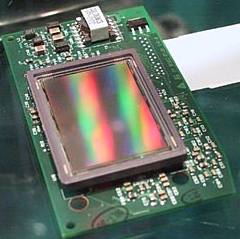 Photography is a passion that few truly take to heart. If one is smitten by it, then it is indeed a wonderful hobby to have. If it is your profession, then I suppose you are living your dream. But modern day gadgets have made sure that it is no longer the hobby of the select few. Gone are the days when you want to take the perfect picture in one snap so as to minimize the wastage of both reel and cash. Today technology allows you to take a million snaps and you can pick one that you like the most.
Photography is a passion that few truly take to heart. If one is smitten by it, then it is indeed a wonderful hobby to have. If it is your profession, then I suppose you are living your dream. But modern day gadgets have made sure that it is no longer the hobby of the select few. Gone are the days when you want to take the perfect picture in one snap so as to minimize the wastage of both reel and cash. Today technology allows you to take a million snaps and you can pick one that you like the most.
Apart from this ease, modern traveler wishes his camera be more compact. For instance, I want the best camera phone so as to avoid carrying any additional baggage when I’m on a holiday. So Kodak’s Fas Mosleh beautifully put it when speaking to his CMOS team: “high resolution is required but no longer sufficient”. The man put everything that needed to be said in one simple sentence. It meant that he wanted the cameras to be better and smaller. Compromise on quality for the sake of size is no longer acceptable to the boss, I guess.
The 5-megapixel KAC-05020 Image Sensor is what his amazing team came up with as a response to his demand. This new CMOS makes the camera smaller and yet gives it the same resolution as its predecessors. The small pixel design – 1.4 microns instead of the usual 1.75 ensures that the size of the camera is reduced considerably nut not image resolution and quality. The change is achieved by changing the fundamental design of the microprocessor itself.
The first few days I sat through my microprocessor and microcontroller classes, I was enlightened about MOSFET and CMOSFET and told about how they indeed work by capturing electrons and responding accordingly. This new technology is totally contrary to the traditional view thought in college classrooms in the sense that the new CMOS works by identifying the lack of electrons for image capturing. In a more technical sense, we are now operating and capturing image using the holes than the electrons. This I guess reduces space as more electron production means fewer holes to read. This in turn means a more compact structure.
That probably is still a very crude way of putting the technology as it deals with both varying polarities and the production of electrons in the MOSFET when light is incident on it. For the regular user though, this means that the size of cameras is going to be reduced further and maybe better camera on your next mobile. Now that indeed is good!
